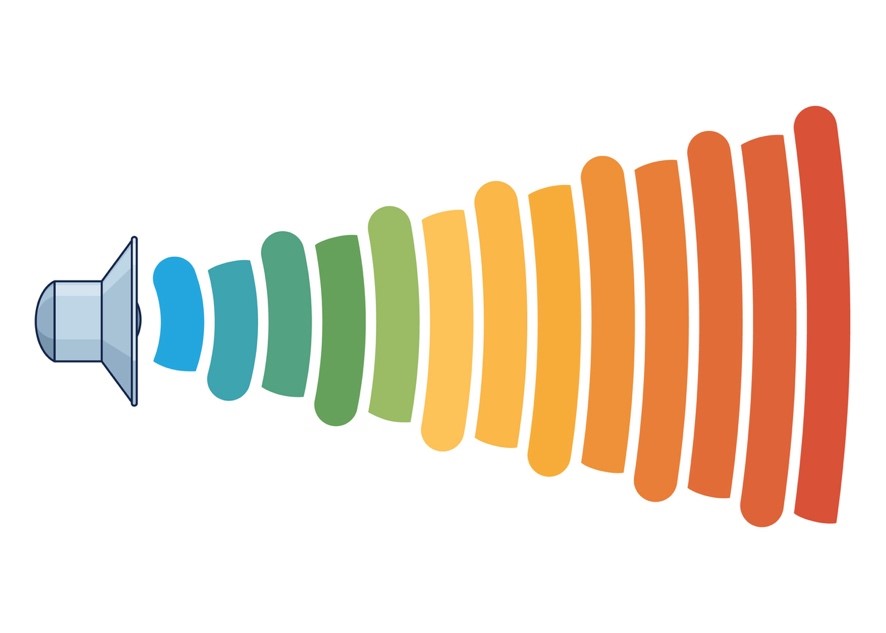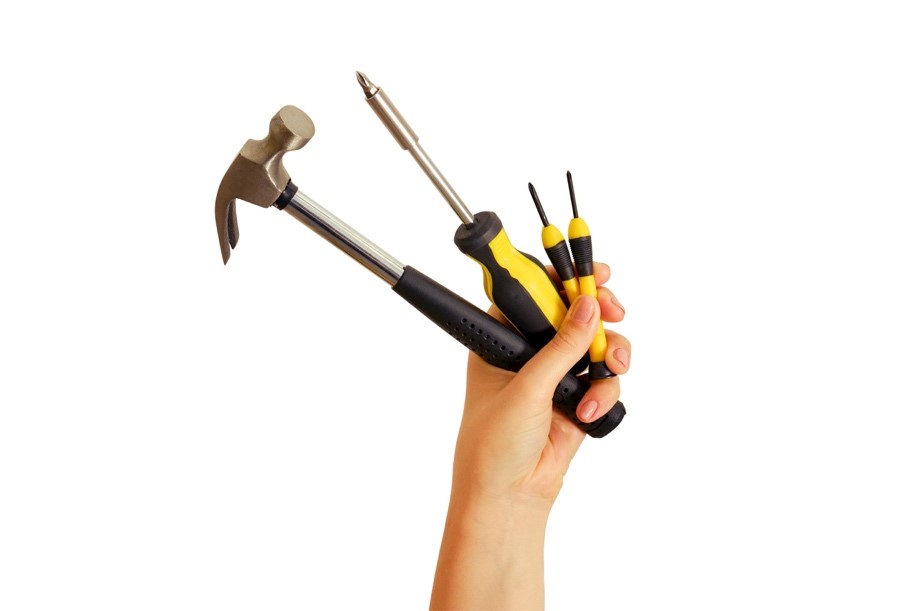When selected and used wisely, smart tools in K-12 classrooms can lead to a significant return on investment (ROI).

A teacher’s toolbox used to consist of chalk, pencils, papers, and the odd apple, but hybrid technology has now taken priority with the advent of a new generation of educators and the flexibility required during the pandemic.
Educational smart tools previously identified as projectors or video linkups have been replaced by smart boards and AI programs for hybrid teaching. These products can increase collaboration in classrooms and help optimize spaces not previously designed for modern learning styles.
However, their anticipated effectiveness may not always align with the price tag associated with installation, maintenance, training, and use of smart tools. Districts, as a result, need to assess the input of educators, learners, and industry experts to pick the right amount, and timing, of smart tools for their classrooms.

State-Of-The-Art Tool Types
Last year, the New York Governor approved $13.2 million to invest in school technology, connectivity, and upgraded security as part of the state’s larger $2 billion Smart Schools Bond Act.1 Technology upgrades and massive investments are a positive trend beyond New York, even after in-person instruction was fully reinstated. Tools can range in price from a few hundred to thousands of dollars per unit, with AI products offering freemium and premium versions:
Smartboards: A pre-existing technology with the capability to project interactive images, with newer models similar to touch-screen tablets with internet access. Units can be fixed or moveable with a price tag between $1-3K per smartboard.
Devices: Inexpensive items inclusive of document camera projectors or clickers for student participation. Larger investments include 1:1 computer or tablet programs for student home and classroom use, or alternatively, device charging carts for shared student use solely onsite.
E-Resources: E-books and digital databases for research that are more accessible and affordable than print sources.
Augmented or Virtual Reality: Programs like ClassVR integrate virtual reality headset experiences with school lessons ranging from visiting historical sites to interactive social lessons like the Stanford-developed VR “Becoming Homeless” simulation.2
Hybrid Teaching Cameras: Teaching or learning remotely can allow students to access live presentations from a wider variety of guests in any location, devices like The Meeting Owl with a 360-degree camera and microphone capability can make hybrid learning more personal.
Apps and AI Tools: Learning management systems like Canva and Blackboard, or AI tools like Magic School can assist teachers with lesson plans and can make notetaking more accessible for students with disabilities.

How Can Schools Design for Tools?
Smart devices can make collaboration easier and more accessible, but they can also potentially create an individualistic learning experience.
To prevent the latter, classrooms need to be equipped with non-fixed desks and chairs that can be easily rearranged. More pragmatically, classrooms need to have abundant outlet access and connectivity signals, particularly if schools are built with signal-blocking materials that create spotty access, requiring WiFi extenders.
Schools being modernized with technology may have select rooms that are either intimately sized or larger in space depending on the tool used. For example, VR experiences may be better in bigger spaces, with tablet-based lessons being better in smaller spaces to allow students to work together similar to paper exercises. Curriculums will also need to be adapted to be versatile with device use, capitalizing on digital capabilities beyond file digitalization, like video instead of written projects and live-feedback phone quizzes.
The more mobile smart tools and student seating can be, the more teachers and students can engage with each other using technology as a learning tool, instead of a primary educator.
Effects of Smart Tools
With any new addition, smart tools can have positive or negative effects ranging from increased accommodations for students with disabilities to teachers not knowing how to best use a technology
For instance, 1:1 device programs where every student gets assigned a device for home and school use have had negative student results like worsening behavior correlated with higher screen time, increased distractions with technology, tech fatigue, and connectivity barriers at home reducing their learning potential.3 Moreover, teachers may experience frustration with new tools and be concerned with potential AI risks, like cheating or data security vulnerability.4
Conversely, it can make grading projects easier and predict student performance with greater accuracy.4 Students can also receive personalized lessons with different paces and difficulties using AI tools, and learners may actively prefer learning through technology since it’s more native to them.4
A four-year study based on Apple Device usage in K-12 schools has also found that teacher productivity increased by 1.5 hours a week, teacher turnover decreased by 15%, and academic time recaptured by students increased by 30%.5
The outcome of smart tools varies based on school culture and population, but district leaders can increase involvement and communication with stakeholders to develop a plan for technology integration without education degradation.
Are Tools a Smart Investment?
Smart tools may be a prudent budget allocation if they are used to support schools as part of their larger improvement plans instead of assuming it will be a panacea to systemic causes of teacher turnover or student disengagement.
A portion of schools have already invested in technology during the pandemic, including a $308 million expenditure from Chicago Public Schools, with no long-term plans and thousands of lost or retired devices between March 2020 and December 2022.6 Additionally, once schools invest in smart tools and have positive results, future budget cuts may be in staffing instead of in technology.7
When used wisely, smart tools can lead to a significant return on investments like the nearly $1 million in IT savings or $237 million in administrative service savings seen in previous technology and software implementations.5 & 8
The initial increased cost in IT services, electricity, installations, and training may be a smart long-term investment, particularly with bonds and grant funding, but the use of smart tools must be properly strategized to prevent what ultimately could turn into a failed project.
Be Smart with Smart Tools
Students need to learn to use updated programs, tools, and AI in preparation for future careers. In doing so, schools have the potential to evolve their learning spaces into more collaborative and immersive ones, if they plan accordingly.
Delivering smart boards and obtaining AI program licenses is only a small part of strategically upgrading schools. Stakeholders need to be consulted before investments take place and consistent opportunities for feedback need to be provided. It’s wiser to modernize progressively with benchmarks identified for future tech additions.
Smart tools can be exactly what the name implies if school leaders are smart about how, why, and when they invest in these tools.
- New York State. (2023, June 29). Governor Hochul announces $13.2 million for school technology and security enhancements. https://www.governor.ny.gov/news/governor-hochul-announces-132-million-school-technology-and-security-enhancements
- Shashkevich, A. (2018, October 17). Virtual reality can help make people more compassionate compared to other media, new Stanford study finds. Stanford News. https://news.stanford.edu/press-releases/2018/10/17/virtual-reality-eople-empathetic/
- Bushweller, K. (2022, May 17). What the massive shift to 1-to-1 computing means for schools, in charts. Education Week. https://www.edweek.org/technology/what-the-massive-shift-to-1-to-1-computing-means-for-schools-in-charts/2022/05
- Dimitriadou E, Lanitis A. A critical evaluation, challenges, and future perspectives of using artificial intelligence and emerging technologies in smart classrooms. Smart Learn. Environ. 2023;10(1):12. doi: 10.1186/s40561-023-00231-3. Epub 2023 Feb 6. PMCID: PMC9900563.
- Forrester. (2023, January). The total economic impact of Apple devices for K-12 education. https://education-static.apple.com/smart-investment/2023_Forrester_TEI_K-12_Education_Report.pdf
- Koumpilova, M. (2022, December 13). Chicago spent $308 million on technology and then left schools to their own devices. Chalkbeat. https://www.chalkbeat.org/chicago/2022/12/13/23506463/chicago-public-schools-technology-spending-tracking-computers-covid-relief/
- Ingram, D. (2020, July 10). Schools face a funding crunch — and rising technology costs. NBC News. https://www.nbcnews.com/tech/tech-news/schools-face-funding-crunch-rising-technology-costs-n1233418
- Vincent-Lancrin, Stéphan (2022) “Smart Education Technology: How It Might Transform Teaching (and Learning),” New England Journal of Public Policy: Vol. 34: Iss. 1, Article 5. Available at: https://scholarworks.umb.edu/nejpp/vol34/iss1/5








